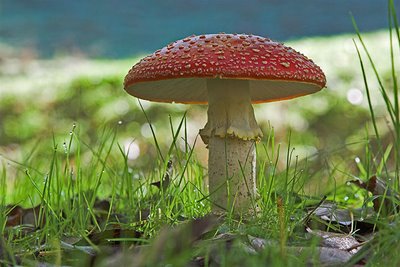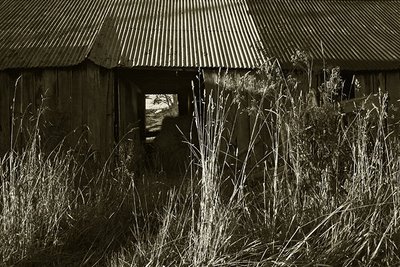I shrug and smile a little, say nothing. I feel strangely calm and deliberate today, as if I’ve been blessed with a deep and peaceful equanimity. She gets me to sign the form and I notice she seems to have missed the “yes” beside the last question, which asks whether I engage in any hazardous activities.
today, as if I’ve been blessed with a deep and peaceful equanimity. She gets me to sign the form and I notice she seems to have missed the “yes” beside the last question, which asks whether I engage in any hazardous activities.
“The hazardous activity is rock climbing,” I say, pointing to the question, “but I’m not doing it today.”
She smiles and jots a note, then takes me through to the donation room, where I get a position by the window. I’m to be attended to by Marcia. She looks to be in her late 50s, determined, capable, in control. Marcia introduces herself and asks for my full name and date of birth; the usual ritual. I tell her, and she sets about transferring small, coded stickers from a sheet to an assortment of bags and tubes and phials. I am to be dispersed, sampled, tested, stored, and, eventually, to become part of someone else. With luck, my fabulous haemoglobin might save someone’s life.
“And what do you have planned for Easter?” Marcia asks.
“Staying put. Staying out of the hills. Too many people; the huts’ll be full of hunters.”
“Ah, the roar,” she says. “Everyone looking for a stag, though why you’d want a stag in the roar, I don’t know.”
“Yeah, beats me. They’re pretty horrible this time of year.”
Marcia and I talk a little about the stink of stags and their disgusting behaviour until she says, “Now, this might be the time to look away.” She has the needle poised over my inflated vein. It doesn’t bother me, but I look away anyway. A momentary prick and it’s done.
“You did that really well,” I say. “I hardly felt a thing.”
“That’s because you were distracted,” she says, but it’s not true. We resume talking about stags.
“I had one write off my car once,” Marcia says. “It was a Datsun 120Y.”
“Classic car.”
She nods and tells me the story. “Apparently this stag decided it didn’t like the look of my car. Somehow it managed to break  through the fence; I was inside, and heard a lot of noise. I went out—it was at night—and managed to get the thing back in the paddock.”
through the fence; I was inside, and heard a lot of noise. I went out—it was at night—and managed to get the thing back in the paddock.”
She unclips the clamp, and the tube running from my arm instantly turns purple-red. I’m thinking about this small, capable woman managing to get a worked up, hormone blinded red stag, probably weighing close to several hundred kilos, back into its paddock. I’d have shot the bugger.
“Anyway, I had to go to work, and I couldn’t get in the driver’s door, it was too badly beaten up. I had to crawl in through the passenger’s side. The car still drove ok, but I didn’t realise how bad the damage was until I finished my shift and saw it in daylight.” She laughs. “When the other traffic on the road saw me coming, everyone got out of the way.”
“I’m not surprised.”
“I told my husband what had happened. He went outside, looked at it, came back in and made himself a cup of tea. I was furious,” she says.
I think I’d rather have taken on the stag. Apparently the panelwork on the car was too badly damaged and the insurance company wrote the car off.
...
When my 470 ml is in the bag, Marcia clamps the tube and goes through the remainder of the process, methodically, carefully. She folds a wad of gauze, presses it over the needle, which she then extracts. I know the ritual; I’ve been through it more often than I can remember, so I don’t wait for her to ask, but put my finger on the gauze so she has both hands free to process the various bags and phials. Eventually she takes over the gauze pad, and peeks underneath to see if the hole has closed over. She’s not satisfied, so she raises my arm in the air and presses down firmly on the pad. We chat for a while until she lowers my arm and begins wrapping the pad with a length of that strange, self adherent elastic bandage.
“They first developed this for horses,” she says. “It’s good for tying up plants in the garden.” She gives me a slightly impish look.
...
In the tearoom I chat with a lively, fit looking guy who asks me what I’m doing for Easter. I give him the same answer I gave Marcia.
“What about you?” I ask.
“Means nothing to me, mate,” he says, all cheerful. “We just carry on as usual where I work.”
“On the milk tankers,” he replies. “Drive ‘em for Fonterra. Go all over the place—Hawkes Bay, Taranaki, down to Levin...”
“You go up the Pohangina Valley?”
“Yeah, too right. Go up there lots.” I get a big grin.
We yarn for a while over a cuppa and a biscuit, then go our separate ways.
“Might see you on the road some time,” I say.
“Yeah, cheers mate,” he says.
...
I leave, smiling outside and in. You don’t get paid for giving blood in Aotearoa; there’s no financial reward. For me, the rewards are a cup of tea and a biscuit; meeting people like Marcia and the milk tanker driver whose name I don’t even know; and the satisfaction of sharing my fabulous haemoglobin. Beats a bit of cash any day; hands down.
Photo 1: Fence post, No. 3 Line, Pohangina Valley.
Photo 2: Just an autumn photo: Amanita muscaria, Te Awaoteatua Stream, Pohangina Valley.
Photo 3: Shed and grasses, the Catlins, Southland.
Photos and words © 2006 Pete McGregor

16 comments:
Hey Pete -
Though I know how spoiled you usually are for comments, I thought I'd say how nice nice nice this post was - especially as someone who has had lots of similar procedures of late (the best medical 'compliment' I've gotten of late was from my GP, who purred "What...nice...blood pressure you have.")
I thought also I'd let you know that I got stuck on the first picture...nice composition, nice colours/textures, nice moment.
It reminds me of a painting, in that it feels both entirely contrived and achingly true...
G'day Pete, the better half and I were just talking the other day about the Fly Agaric, we've seen them growing in association with pine plantations over here, be interested to know what yours was growing near. Cheers, Duncan.
Wonderful moments shared, now shared with us. Uplifting. Happy Easter, Pete :-)
No easter celebrations here. When I was young my family always had a seder for Passover. I like the ritual, but haven't sat at a table with a cup of wine for Elijah in a long time. In my dreams the old ways are done and finished.
I like your answer about engaging in hazardous activity. And I especially like that first photo. It has such beautiful texture. Like fur and velvet.
Someone very lucky is going to get your haemoglobin and suddenly want to climb the tallest peaks.
That stuff is called Coban here in the states. Really wonderful stuff, gets used a lot in veterinary med, as well as for human medicine.
When I had a little ambulance ride this past year, I found the EMT patter very reassuring, especially since it was much the same as I tell my patients. She found out I was a nurse at the end of the ride, and apologized, but I appreciated the familiarity. It's soothing from both sides, as a sort of ritual.
Ariel: I'll take as much spoiling as I can get. Thanks ;^P I appreciate those thoughts on the photo; nice when someone looks closely and takes the time to articulate responses. Hope it's all going smoothly for you.
Duncan: It's some kind of cypress, I think. Not sure, but I'll see if I can find out.
Thanks Anita :^D
RD: I think that photo's growing on me. Among other things, I'm beginning to realise I like the way everything's in full view but some things are easily overlooked. You're right about the textures — the post sees little sun and the algal pelage does feel slightly velvety.
Zhoen: I must ask what it's called here. It's weird, almost organic.
That's an interesting observation about the ritual being soothing from both sides. I hadn't recognised its value in helping the provider. Thanks.
engaging images. the first is so simple, but is very compelling. it makes one wonder...the mushroom is lovely...especially the dew drops on the grasses. great light in the last one...makes me want to explore.
Thanks wolf! :^D
I'm so pleased to see a beautifully told and beautifully illustrated story of blood donation.
To my shame it took a family member's serious illness (just last summer), requiring transfusions for me to get myself down to the clinic to give, as I'd intended for years. I love it--makes me feel soft, high almost--I go as often as they'll let me now.
"The Pohangina Valley" has got to be one of the most poetic names on earth.
I enjoy reading about the life you live there.
Hey Pamela, they might be taking some of your blood, but what are they replacing it with? I want some. ;^P
Patry: It's not just the name: it's the place. Very special. Pleased you're enjoying reading about it.
A fabulous read Pete, and I didn't even feel faint when I saw the needle go in....! (the way you write, well, I was THERE....!) Love those pics - the paradise you live in is clearly beautiful, but it is captured so beautifully by you on film. For us lucky bloggers to enjoy. Thank you for the captivations - so very much :-*
That's wonderful, Pete. Your photographs are stunning, but that's nothing new.
Thankyou KSG :^)
And thank you, also, Brenda. Tried to put another post up this evening but it kept falling over. Maybe something was trying to tell me something...
you have such a knack for story telling- I recently have had many blood tests myself and can appreciate a good 'poker'.. and good photos, such as yours :)
Enjoyable post as always.
Thanks Cindy; I hope the tests all had good outcomes :^)
Post a Comment